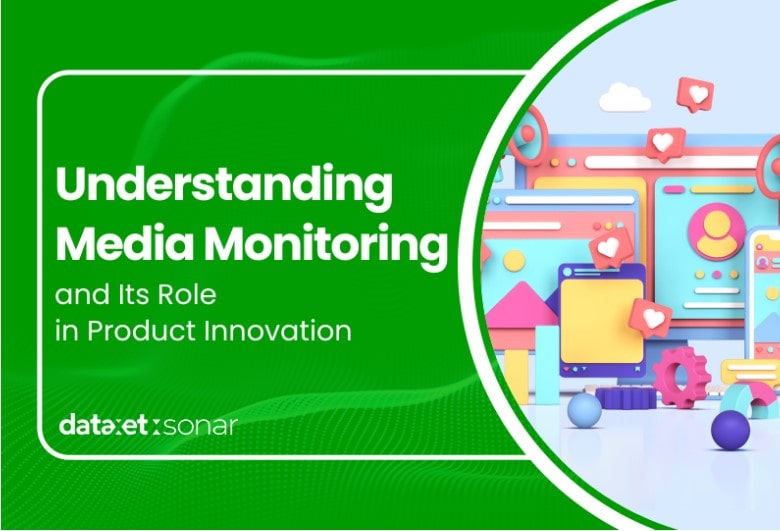Table of Contents
In today’s highly competitive business landscape, a product’s success in the market depends not only on creative ideas but also on understanding consumer needs and preferences. Media monitoring has emerged as a strategic tool that helps companies gain deep insights into market trends, customer opinions, and public responses to their products or services. By leveraging data from social media, forums, and news websites, businesses can identify opportunities for innovation and adapt their product development strategies accordingly.
Media monitoring goes beyond merely tracking keywords or brand mentions. It’s a proactive approach to gathering feedback and ensuring that every business decision is based on accurate and relevant data.
1. Effective Feedback Collection Techniques

Customer feedback is the primary driver of innovation. Media monitoring offers sophisticated methods for collecting this feedback effectively. Here are some techniques:
-
1. Monitoring Social Media Conversations
Social media platforms like Twitter, Instagram, and Facebook are rich sources of customer opinions. Monitoring hashtags, mentions, or reviews related to your brand can provide insights into what consumers like or dislike. -
2. Analyzing Product Reviews
Reviews on e-commerce platforms and apps provide direct data about user experiences with your products. Media monitoring tools can filter and analyze these reviews to uncover common patterns or issues. -
3. Indirect Surveys
By monitoring discussions in online forums or community groups, you can gain indirect insights into consumer needs or complaints without directly conducting surveys. -
4. Competitor Campaign Monitoring
Tracking how customers respond to competitors’ products allows you to understand what captures audience attention and identify areas where your brand can excel.
2. Market Needs Analysis for Innovation

Understanding market needs is the foundation of successful product development. Media monitoring helps identify these needs in the following ways:
-
1. Identifying Unresolved Problems
By analyzing consumer complaints—whether about your brand or competitors—you can discover unmet needs and develop relevant solutions. -
2. Understanding Changing Consumer Preferences
Consumer trends evolve constantly. Monitoring public sentiment around specific product categories can help you adapt to shifting needs and preferences. -
3. Assessing Market Potential for New Products
Before launching a new product, media monitoring can gauge whether there’s sufficient interest in the product category, minimizing the risk of failure.
3. Identifying Consumer Trends

Consumer trends are vital indicators for product innovation. Media monitoring helps identify these trends through:
-
1. Tracking Trending Topics
Media monitoring enables you to identify topics that are widely discussed by your audience, providing insights into what’s currently popular and worth leveraging. -
2. Monitoring Changes in Consumer Behavior
For example, if there’s a growing interest in sustainable products, media monitoring can help you identify opportunities to align your products with this trend. -
3. Audience Demographic Analysis
Understanding who is discussing your brand or product categories enables you to tailor innovations to specific consumer segments.
4. Data-Driven Product Development Strategies

Media monitoring not only helps understand market needs but also provides a strategic framework for product development. Here are some strategies:
-
1. Leveraging Consumer Sentiment
Sentiment analysis helps you understand how consumers perceive your products—positively, negatively, or neutrally. This information can guide product adjustments or marketing strategies. -
2. Developing Prototypes Based on Feedback
Feedback collected through media monitoring for business can be used to create product prototypes. These prototypes can then be tested in the market to ensure their relevance and success. -
3. Collaborating with User Communities
Engaging user communities in product discussions helps build loyalty while gaining innovative ideas directly from customers.
5. Case Study: Using Media Monitoring for Product Innovation

A client in the FMCG sector was planning a new product launch and faced challenges in understanding market needs and preferences. Using a media monitoring platform like Dataxet, the client gained deep insights into public opinions, flavor preferences, and consumer perceptions of similar products in the market.
The Approach:
-
1. Industry Landscape Analysis:
Through Dataxet, the team received detailed reports on FMCG industry trends, including similar product categories. The analysis covered customer reviews, sentiment toward competitor brands, and consumer preferences regarding product attributes like flavor, packaging, and price. -
2. Flavor Preference Monitoring:
By monitoring social media discussions, online forums, and e-commerce reviews, the client identified trending flavors in the market. For example, conversations revealed growing interest in local or innovative flavors such as herbal or tropical varieties. Dataxet filtered and analyzed sentiment around these flavors, providing inspiration for the new product. -
3. Competitor Analysis:
Media monitoring enabled the client to analyze competitor strategies, including newly launched products, market responses, and unmet opportunities. For instance, the client discovered that competitors underutilized sustainability narratives in their marketing. As a result, the client decided to introduce environmentally friendly packaging as a unique selling point.
-
4. Consumer Complaint Tracking:
Dataxet also tracked negative reviews about competitor products. This allowed the client to avoid similar issues, such as overly sweet flavors, impractical packaging sizes, or price-quality mismatches. Understand the important matrices in media monitoring. -
5. Demographic and Regional Analysis:
Reports from Dataxet highlighted regional preferences. For example, urban areas favored modern or premium flavors, while suburban areas preferred traditional ones. This information guided the client’s distribution and marketing strategies.
Results Achieved:
-
1. Data-Driven Product Development:
The client successfully launched a new product with flavors aligned to market trends, such as a tropical flavor that was popular on social media. -
2. Targeted Marketing Strategies:
Thanks to demographic analysis, the client executed localized campaigns targeting regions with specific preferences, improving the product’s success rate. -
3. Avoiding Competitor Pitfalls:
By understanding competitors' weaknesses, the client ensured their product met consumer expectations in terms of flavor, packaging, and pricing.
This success story demonstrates how media monitoring, combined with in-depth analysis, can be a powerful tool to support product innovation. It not only helps businesses understand market needs but also ensures that launched products remain relevant and competitive.
6. Conclusion
Media monitoring has become an essential component of product development and innovation. By gathering feedback, understanding market needs, and identifying consumer trends, companies can make more effective data-driven decisions. This strategy helps create products that are not only relevant but also successful in competitive markets.
For businesses looking to maximize the benefits of media monitoring, platforms like Dataxet provide advanced tools and technology to support this process. With real-time insights and in-depth analysis, Dataxet enables businesses to better understand their markets and deliver innovations tailored to consumer needs. If you’d like to learn more about how media monitoring can support your business strategy, don’t hesitate to contact us.






